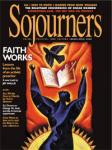The origins of community organizing are generally traced to the pioneering work of Saul Alinsky, who built the first community organizing effort in Chicago’s Back of the Yards neighborhood in the 1930s. Alinsky created the early community-based efforts by organizing existing groups into collective action around particular issues.
Today many communities are much less cohesive, so it is necessary to build relationships first and then take on issues that grow out of those stronger bonds. In poorer communities, churches are often experiencing the same loss of cohesiveness as they struggle to survive in an increasingly barren environment. Thus, organizing becomes a means for such congregations to reconnect with their own members and with the broader community around them.
Congregation-based community organizing is the fastest growing form of organizing in the country, according to Doug Lawson of the Catholic Campaign for Human Development (CCHD). "No one else approximates faith-based organizing," he says. The only non-faith-based organization that has built comparable power is ACORN (Association of Communities Organized for Reform Now).
In 1999, CCHD funded 89 different faith-based community organizations. In all of the local networks, the majority of the member institutions are churches. In some cases, synagogues and mosques have also joined along with other nonreligious organizations, such as unions, hospitals, and other social service providers. In Chicago, the Metropolitan Alliance of Congregations recently brought together 2,000 people to celebrate the creation of a partnership with 10 banks that have agreed to provide up to $1 billion in loans for 13,000 families between now and 2005. The churches will recruit, nurture, and train these families in home ownership.
All community organizing begins with the premise that 1) the problems facing distressed communities do not result from a lack of effective solutions, but from a lack of power to implement these solutions; 2) that the only way for communities to build long-term power is by organizing people and money around a common vision; and 3) that a viable organization can only be achieved if a broadly based indigenous leadership—not one or two charismatic leaders—can knit together the diverse interests of their local institutions.
A 1996 study done by Jeannie Appleman for the Discount Foundation documents the strength of local congregation-based organizing in empowering communities. Of the five faith-based organizing networks studied, she found that all won concrete improvements for their communities and all were able to sufficiently alter the local structures of power to influence resource allocation by effectively rewarding and punishing local elected officials and CEOs. Several of them were able to become a party to decisions on future resource allocations.
The earlier generation of community organizations focused on a single community and issue. Over time, however, it became clear that this approach did not build the power base needed to challenge larger institutions, including city and state governments or big corporations. For that reason faith-based community organizing now is carried out through large citywide or even metropolitan-wide networks. Rev. Dennis Jacobson, pastor of Incarnation Lutheran Church and a leader in MICAH (Milwaukee Innercity Congregations Allied in Hope), admits that Wisconsin’s governor writes off the organization, just as he writes off the inner city of Milwaukee. MICAH, which began as a network of 36 inner-city churches, is now expanding into Milwaukee’s suburbs. "We have to build a larger power base because a lot of issues that affect our communities are statewide issues," says Jacobson.
MICAH used the Community Reinvestment Act as leverage to force 17 lending institutions to change their underwriting criteria for home and business loans. The result was $480 million in home and small business loans to 2,400 low- and moderate-income minority residents.
Churches that become engaged in community organizing are most often rooted in faith traditions that recognize that sin is not just personal, but social and economic as well. Thus, poverty is not simply the result of personal moral failure, but is also caused by the sins of the larger economic or social system. For example, the United Methodist Church’s Book of Discipline explicitly states, "we do not hold poor people morally responsible for their economic state." Community organizing becomes a means by which churches can act against corporate sin. In several cases, higher church bodies have contributed funding.
BY ITS NATURE as a faith community, the church is a relational institution. Individual congregations often consist of members with extensive ties to each other by virtue of being part of a larger extended family, or families whose children attend the same schools, or people who have been in fellowship with each other for many years. For people who have been marginalized by mainstream society, the church is often the one institution offering them the space to freely develop their leadership abilities by serving as deacons, trustees, musicians, and teachers. This makes the church an excellent starting point for building a powerful community organization.
The Discount Foundation study concluded that having a membership based in community institutions, especially within congregations, had enabled the community organizing projects documented to establish themselves as stable and financially viable organizations, accountable to the communities in which the operate. Each organization has leveraged the social capital of congregations to achieve social change; provided a progressive alternative to the Religious Right; and built an organizational culture that fused religious language, symbols, and values with organizing principles of accountability and civic participation.
Chicago’s United Power for Action and Justice—a wide network of churches and local unions—spent months discussing the values on which their broad-based effort would be founded. In a region seriously divided by race, class, and geography, those discussions formed an organization that, remarkably, encompasses people from the city and suburbs, various religious denominations including Catholics, Protestants, Jews, and Muslims, and people from a variety of ethnic, racial, and economic backgrounds. The organization spent its first two years, including a founding meeting attended by more than 9,000 people, establishing common ground before it sought to define its agenda. Modern organizing is concerned with building these kinds of relationships, out of which emerge a commitment to civic engagement.
THE FIRST STAGES of organizing occur within the congregations themselves. Those members of a congregation interested in initiating an organizing effort reach out to other members of their church, listen to their concerns and hopes, and engage them more deeply in the life of the congregation. Then members reach out to neighbors of the congregation—knocking on doors and meeting one-on-one to ask people what they see as pressures affecting the quality of family and neighborhood life. Greg Galluzzo, head of the Gamaliel Foundation, one of the four national organizations that recruits paid organizers and trains community people in organizing, emphasizes the importance of these one-on-one meetings as the foundation for any organizing project. "If you understand the depth of our lack of community, you understand our lack of relationship building," Galluzzo said. "We need one-on-ones because people don’t know each other."
As a church becomes active in the broader issues of the community, new leaders emerge from within the congregation who become engaged not only in the broader organizing efforts, but in the life of the church itself. Pastors whose churches are involved in community organizing note how much better organized their own parish committees are, how much more eager lay people are to become involved and participate in church activities.
Bishop George McKinney, pastor of St. Stephen’s Church of God in Christ in San Diego, explains his commitment to community organizing by saying, "Because of the church’s involvement in addressing certain social and justice issues, we have been able to present God to many who would never have come to church. Thus, community-based organizing has been used by God as a tool of evangelism."
Father Michael Jacques, whose church led the formation of All Congregations Together (ACT) in New Orleans, has seen new leadership emerge in his church "from people I never imagined." ACT has successfully campaigned for increased accountability on the part of public officials—including the mayor, police department, and the board of education. In each case, ACT has influenced these officials to act upon a reform agenda that grew out of hundreds of one-on-one conversations conducted by members of their congregations. Father Jacques sees how participation in community organizing increases a sense of ownership in the church and pride in the community. "It restores those old time concepts of building relationships and looking out for each other."
Getting Started
The four major national organizing networks are:
Industrial Areas Foundation, 220 W. Kinzei St., Fifth Floor, Chicago, IL 60610; (312) 245-9211
Gamaliel Foundation, 203 N. Wabash St., Suite 808, Chicago, IL 60601; (312) 357-2639
Pacific Institute for Community Organizations, 171 Santa Rosa Ave., Oakland, CA 94610; (510) 655-2801
Direct Action Resource Training, P.O. Box 370791, Miami, FL 33137; (305) 576-8020
The most comprehensive national clearinghouse for information and local contacts is:
Catholic Campaign for Human Development, 3211 Fourth St. NE, Washington, DC 20017-1194; (202) 541-3210
A group helping evangelicals to organize is: Hope Communities, 2444 Washington St., Denver, CO 80205; (303) 860-7747
Another source of information and consulting services is: Organize Training Center, 442-A Vicksburg, San Francisco, CA 94114; (415) 821-6180.
HELENE SLESSAREV is the director of urban studies and associate professor of political science at Wheaton College in Illinois. Her most recent book, The Betrayal of the Urban Poor (Temple University Press, 1997), examines the shortcomings of developing systemic policy solutions for urban poverty.

Got something to say about what you're reading? We value your feedback!
